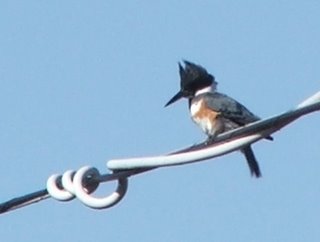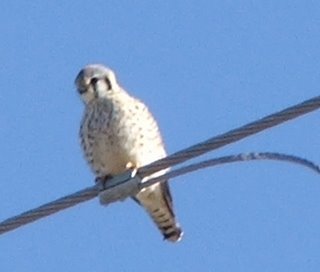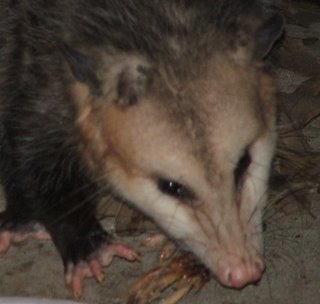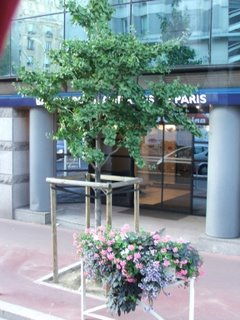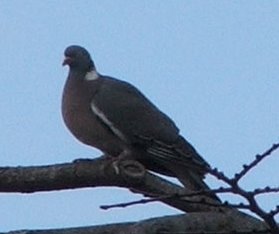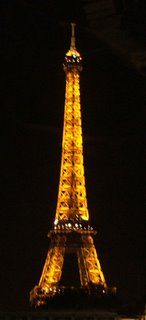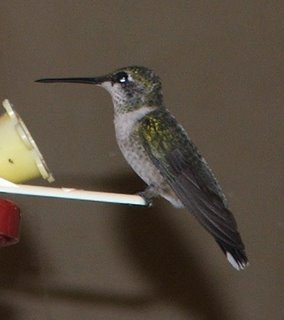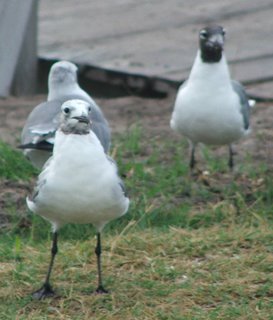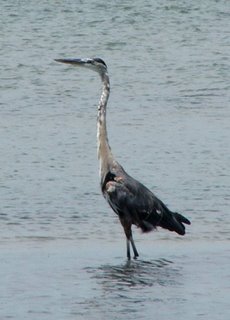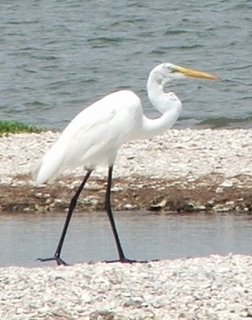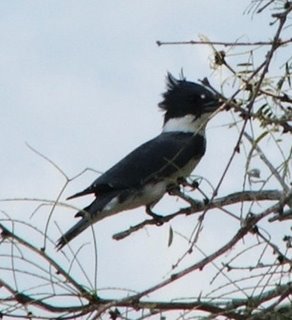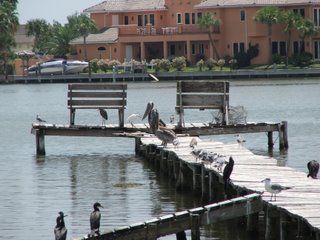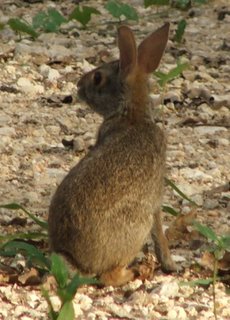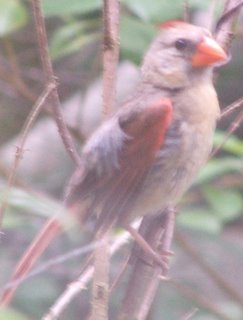 I believe this is the same hawk I saw yesterday near the rice drier that I guessed might be a Red Shouldered Hawk. I was able to get a bit more of a view of the belly area. Even though the tail isn't "red" -- this may be a Red Tail Hawk after all. Perhaps a juvenile. I'm basing this on the narrowness of the bands across the tail.
I believe this is the same hawk I saw yesterday near the rice drier that I guessed might be a Red Shouldered Hawk. I was able to get a bit more of a view of the belly area. Even though the tail isn't "red" -- this may be a Red Tail Hawk after all. Perhaps a juvenile. I'm basing this on the narrowness of the bands across the tail.One thing I have discovered about Red Tail's, they have an incredible variation in coloring. This one is fairly dark, but seems to have the "V" shape of mottledness on the wings (when folded).
Back at Christmas time, I saw what I was sure was a Krieder's variant -- mostly white! (See my Christmas Birds post.)
 In the picture to the right, you can see the belly even better. Right under the wing is the suggestion of the "Belly Bands" most Red Tails have. All the more reason to suspect this might be a Juvenile Red Tail.
In the picture to the right, you can see the belly even better. Right under the wing is the suggestion of the "Belly Bands" most Red Tails have. All the more reason to suspect this might be a Juvenile Red Tail. After catching the handsome youngster at the rice dryer, we headed down Woods Road to see what we could see. This is the location where we found the Kryder's at Christmas time, so I was hoping to see that bird again. We may have seen it, but only from a distance, and I was not able to get a picture. THIS bird, however, was very cooperative!
After catching the handsome youngster at the rice dryer, we headed down Woods Road to see what we could see. This is the location where we found the Kryder's at Christmas time, so I was hoping to see that bird again. We may have seen it, but only from a distance, and I was not able to get a picture. THIS bird, however, was very cooperative!In the picture below, you can see the bird's red tail. Isn't it a beauty?!

I managed not to snap what the bird did next... probably a good thing too. ;-)
 Red Tail Hawks -- probably most hawks -- are very sensitive about their feet. After all, they are the main tools of the hawk's occupation -- finding food.
Red Tail Hawks -- probably most hawks -- are very sensitive about their feet. After all, they are the main tools of the hawk's occupation -- finding food.This one seems to say, "Euuu! I've got something on my foot."










